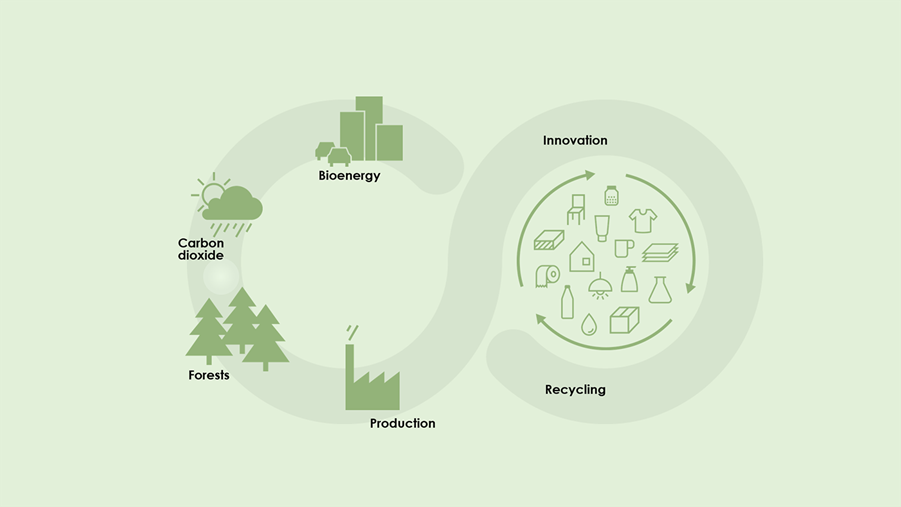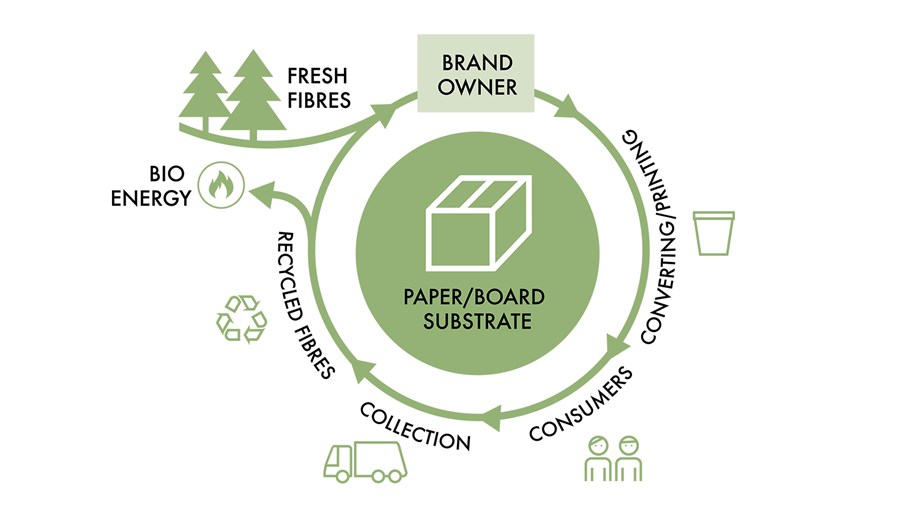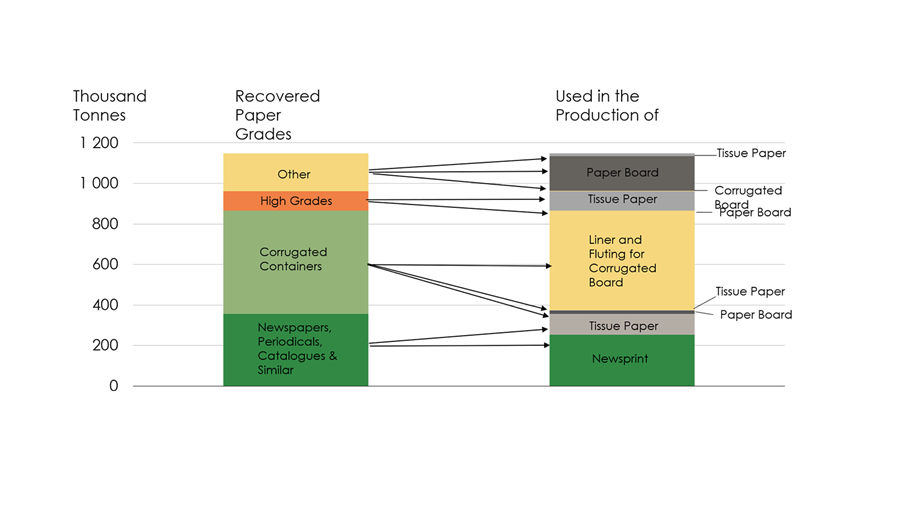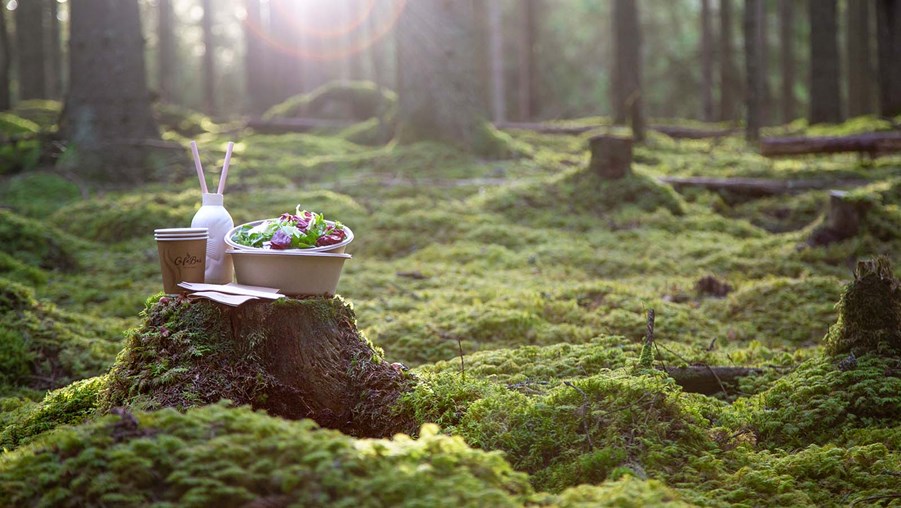
Forest-based products are part of a natural, circular ecocycle that begins and ends with photosynthesis. Active forest management and the products from the forest create the conditions for a closed loop that absorbs, binds and sequesters carbon dioxide.
How the Swedish forest sector's circular ecocycle works:
- Carbon dioxide: Through photosynthesis, growing trees convert sunlight, carbon dioxide in the air and water in the land into wood. The carbon dioxide is bound up in the growing trees.
- Forest: When the trees are fully grown, they are harvested. For each tree harvested, at least two new ones are planted.
- Production: The trees that are harvested become products such as houses, furniture, paperboard, packaging, paper and textiles. These products continue to sequester the carbon bound in the growing trees.
- Innovation: Products and processes are continuously being developed to secure greater resource efficiency and a higher degree of refinement.
- Recycling: Paper and packaging have a high degree of recyclability. Around 80 % become new materials. The wood fibre can be recycled up to 7 times.
- Bioenergy: When the wood fibre is used up, it can be combined with residual products from the forest industry and turned into bioenergy for heating, power and fuels. The biogenic carbon dioxide which is then released is once again absorbed by growing trees. Thus the ecocycle is closed.


